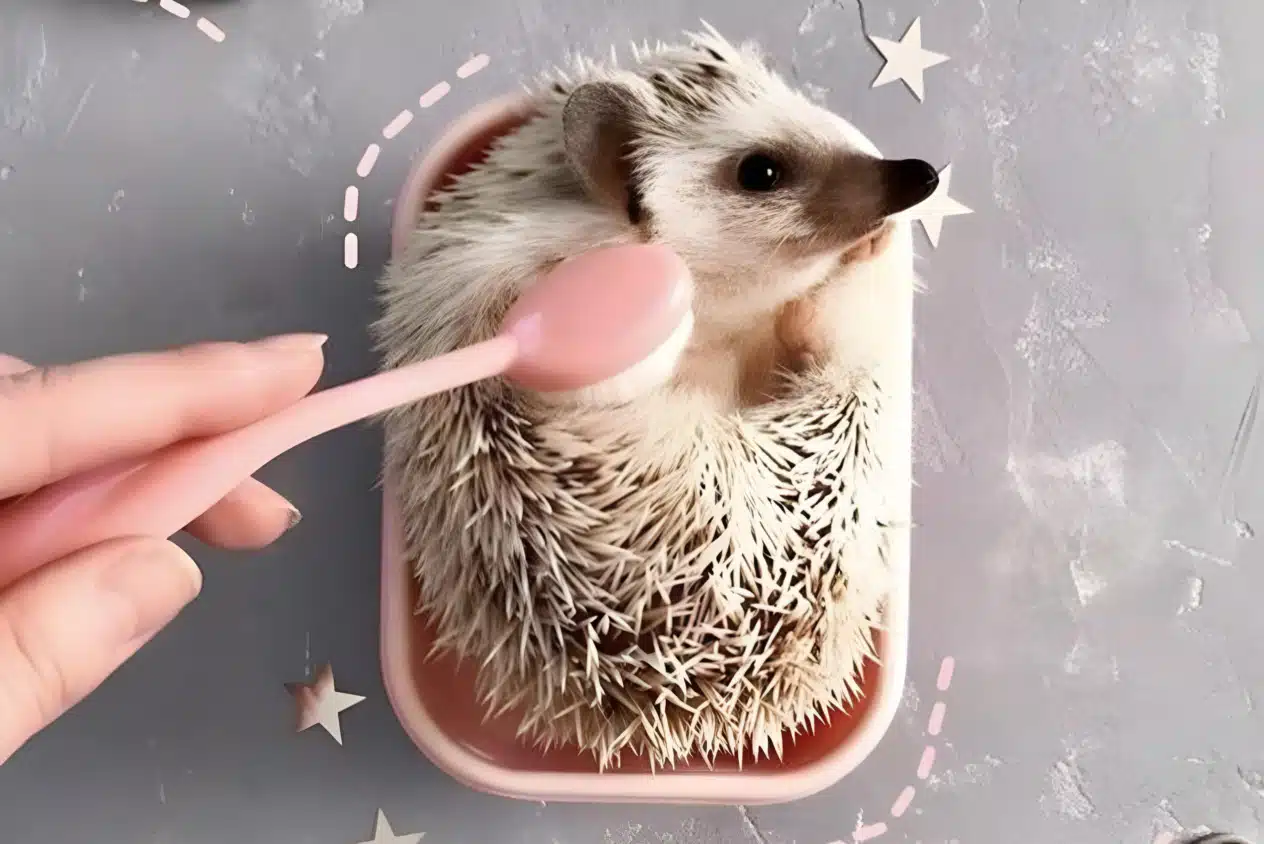Hedgehogs are becoming increasingly popular as pets, winning the hearts of owners with their uniqueness, adorable appearance, and relative ease of care. They are compact, do not require walks, do not cause allergies, and their curious habits make watching them truly enjoyable. However, keeping a hedgehog at home is a responsibility, as these little creatures have special needs, and without proper care, they cannot lead a healthy life.
The advantages of pet hedgehogs include their quiet nature, lack of unpleasant odor, independence, and fascinating character. They do not damage furniture like rodents and can live alone without needing the company of other animals. However, hedgehogs do not like to be disturbed frequently, and taming them requires patience. Additionally, they need a specific diet, proper temperature conditions, and a well-equipped living environment.
What Types of Hedgehogs Exist?
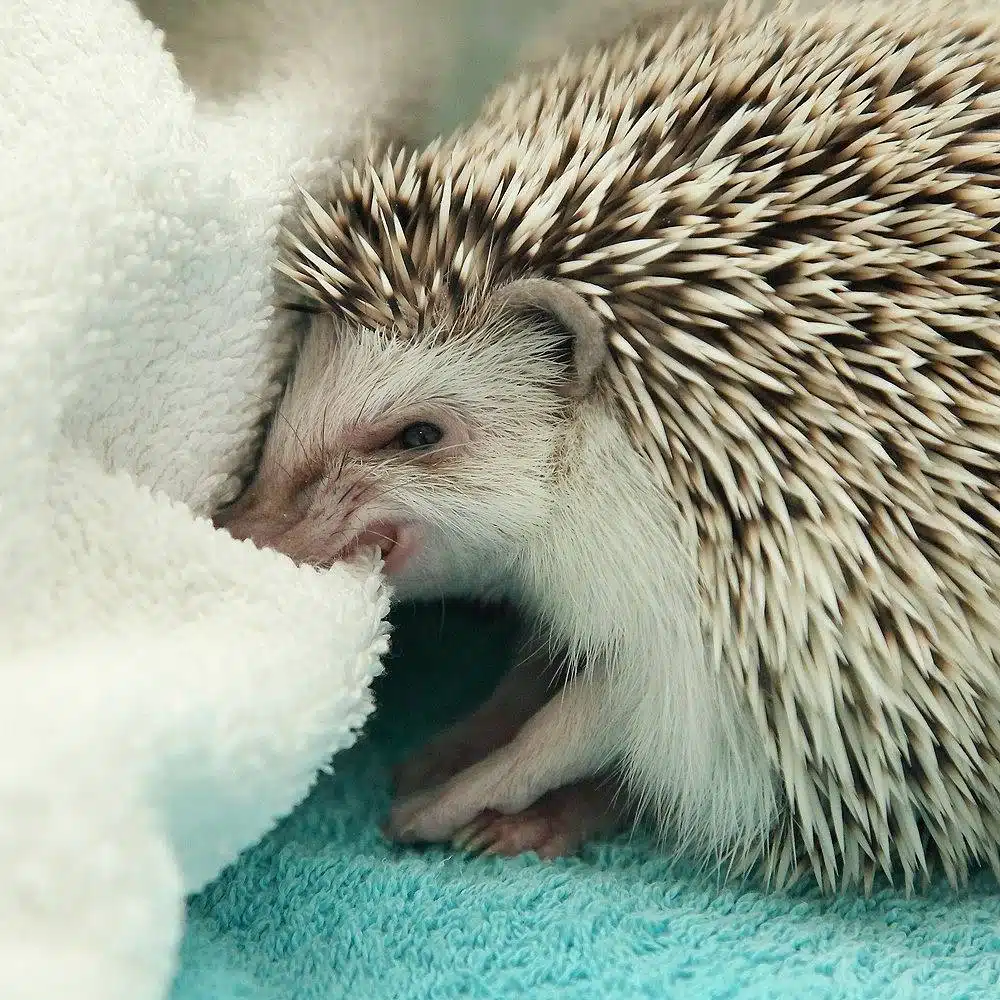
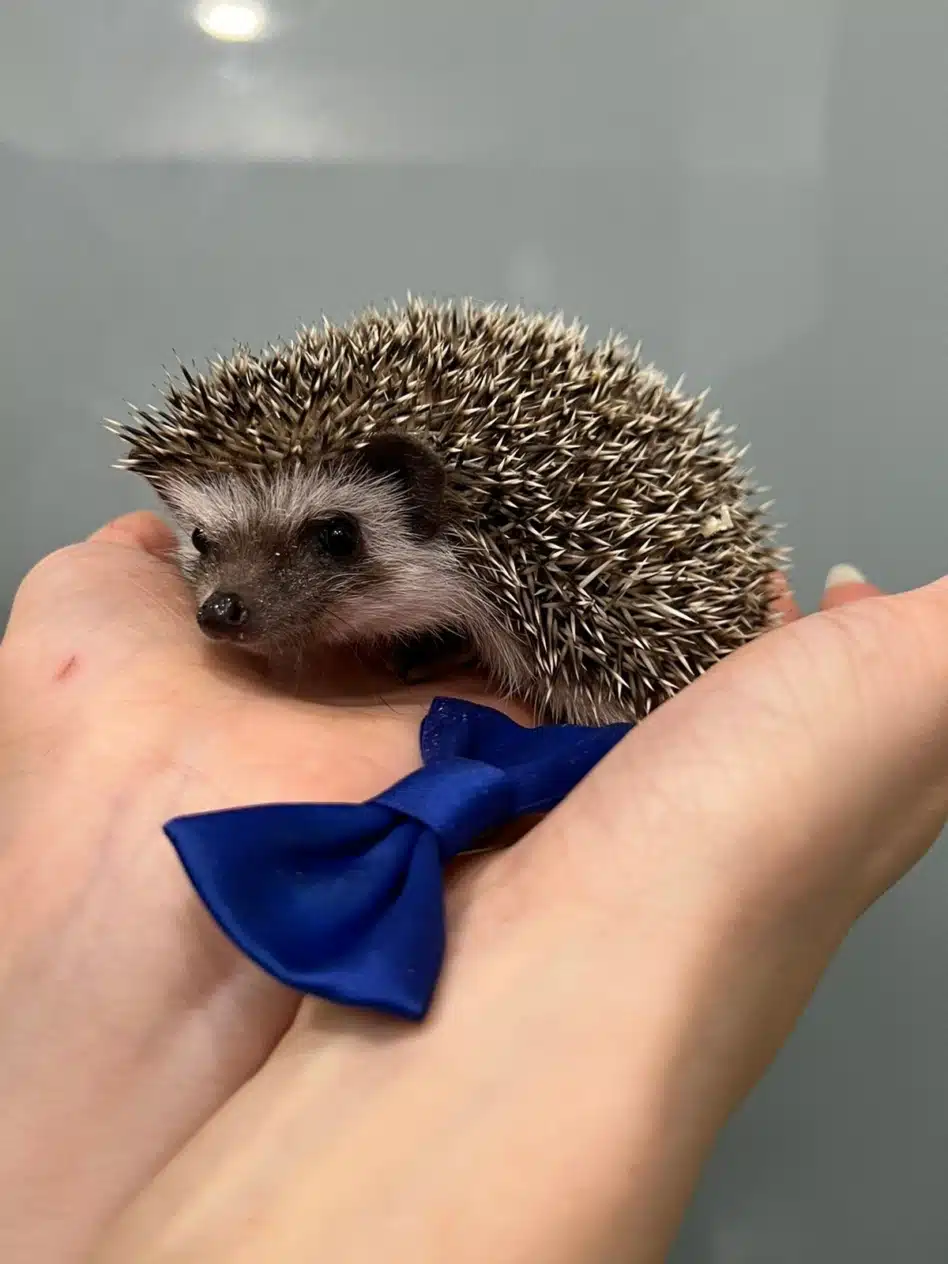
Types of Hedgehogs
The African pygmy hedgehog is the most commonly chosen species for home keeping. This miniature breed was specifically developed for captivity. They have a friendly temperament, are less skittish than their wild relatives, and adapt well to human interaction.
The European hedgehog, familiar to many since childhood, is a typical inhabitant of forests and parks. It is not suited for home life, as it requires a large territory, has a tendency to hibernate, and can carry parasites.
Among other species bred in captivity, the Indian long-eared hedgehog (miniature and highly active), the Egyptian long-eared hedgehog (distinguished by its large ears and agility), and albino hedgehogs—a rare variation of the African pygmy hedgehog with a white coat—stand out. All these species are suitable for captivity but require special care and conditions.
How Long Do Hedgehogs Live?
The average lifespan of pet hedgehogs is 4-7 years, though with proper care, some can live up to 10 years. Unlike their wild counterparts, which face numerous natural threats, pet hedgehogs enjoy a safer environment that allows them to live longer. Key factors influencing longevity include a balanced diet, optimal living conditions, minimal stress, and regular veterinary check-ups.
Living Conditions


Hedgehogs should be kept in spacious cages or terrariums to provide them with enough room for activity. The optimal enclosure size is at least 80×50 cm, with closed walls to prevent escape. Ventilation is crucial: the cage must allow for proper airflow, and the temperature inside should be maintained between 22-26°C.
Hedgehogs are nocturnal animals, so they need a hiding place where they can rest during the day. Maintaining a stable light cycle is important to avoid disrupting their biological rhythm. Direct sunlight is undesirable, but complete darkness can also negatively affect their activity levels.
Temperature control is essential: if a hedgehog gets too cold, it may enter hibernation, which is dangerous for pet hedgehogs. Overheating, on the other hand, can lead to dehydration and heat stroke. Avoid drafts, sudden temperature changes, and ensure a comfortable indoor climate.
For safety, the hedgehog’s enclosure should be free from small objects that could cause entanglement, toxic materials, sharp objects, or fragile plastic parts that can break easily. The bedding should be safe for their paws and free of strong odors. The best options are corn-based or paper bedding.
Hedgehogs are incredibly curious and adorable creatures, but keeping them as pets requires responsibility. With the right conditions, this tiny ball of quills will become a wonderful companion and bring you joy for many years.
Hedgehog Care: Diet, Hygiene, Quill & Nail Maintenance
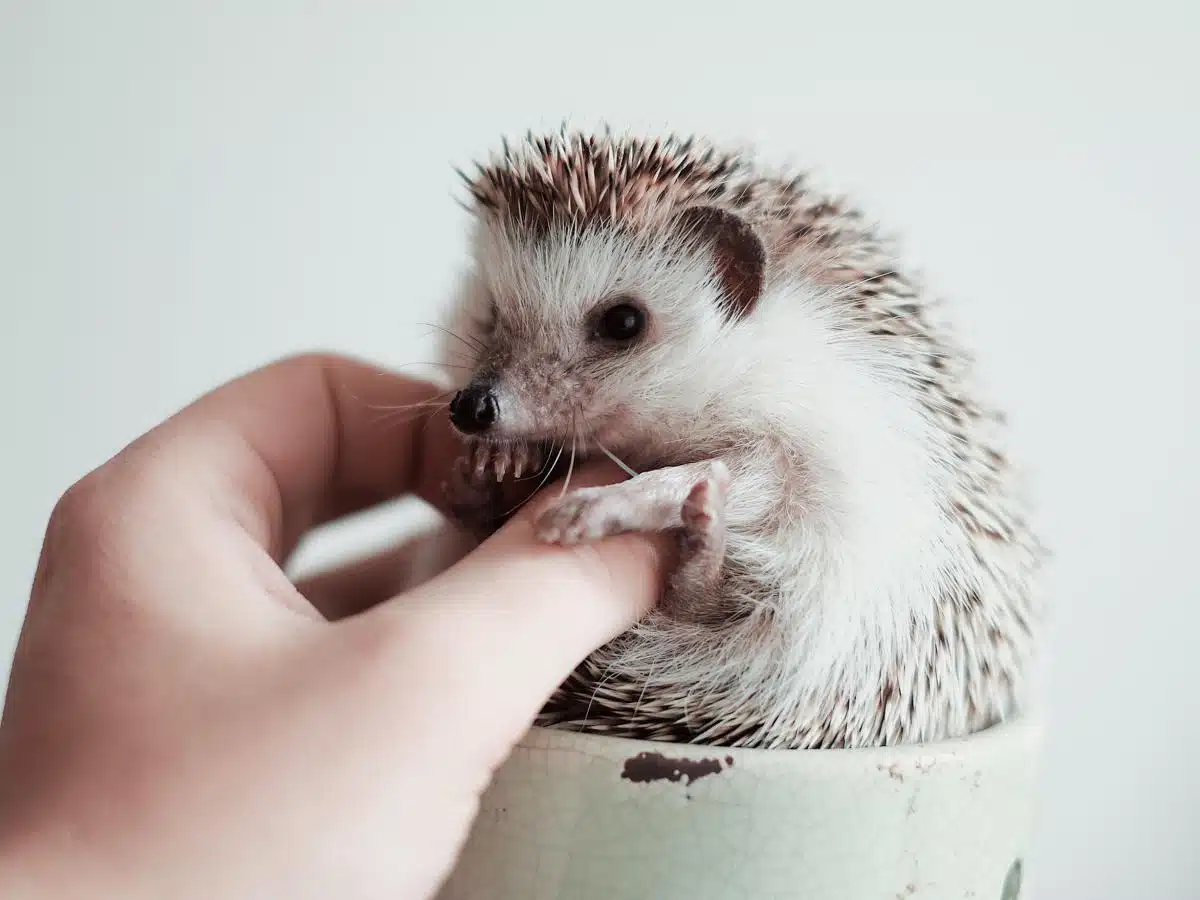
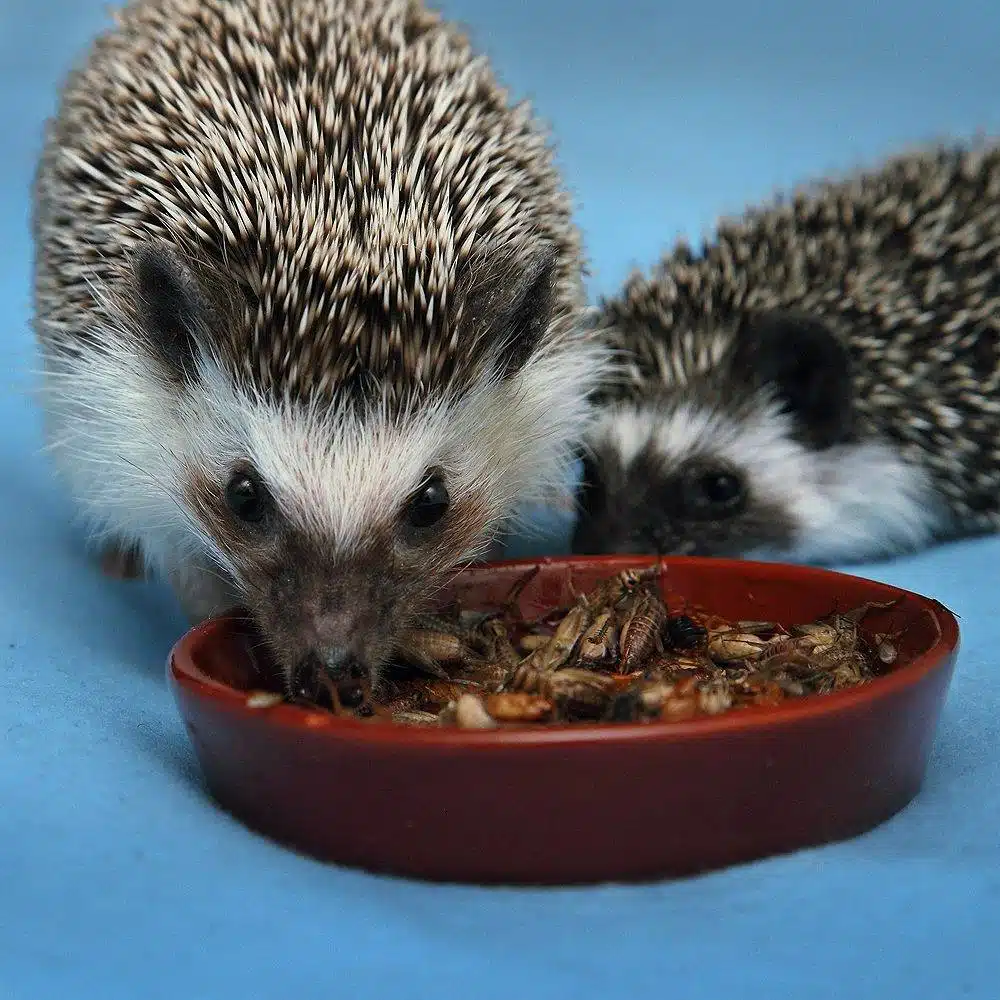
A pet hedgehog is a delicate creature that requires proper care to stay healthy and active. Its diet, hygiene, and quill maintenance directly impact its quality of life.
Diet: What Is Allowed and What Is Strictly Forbidden
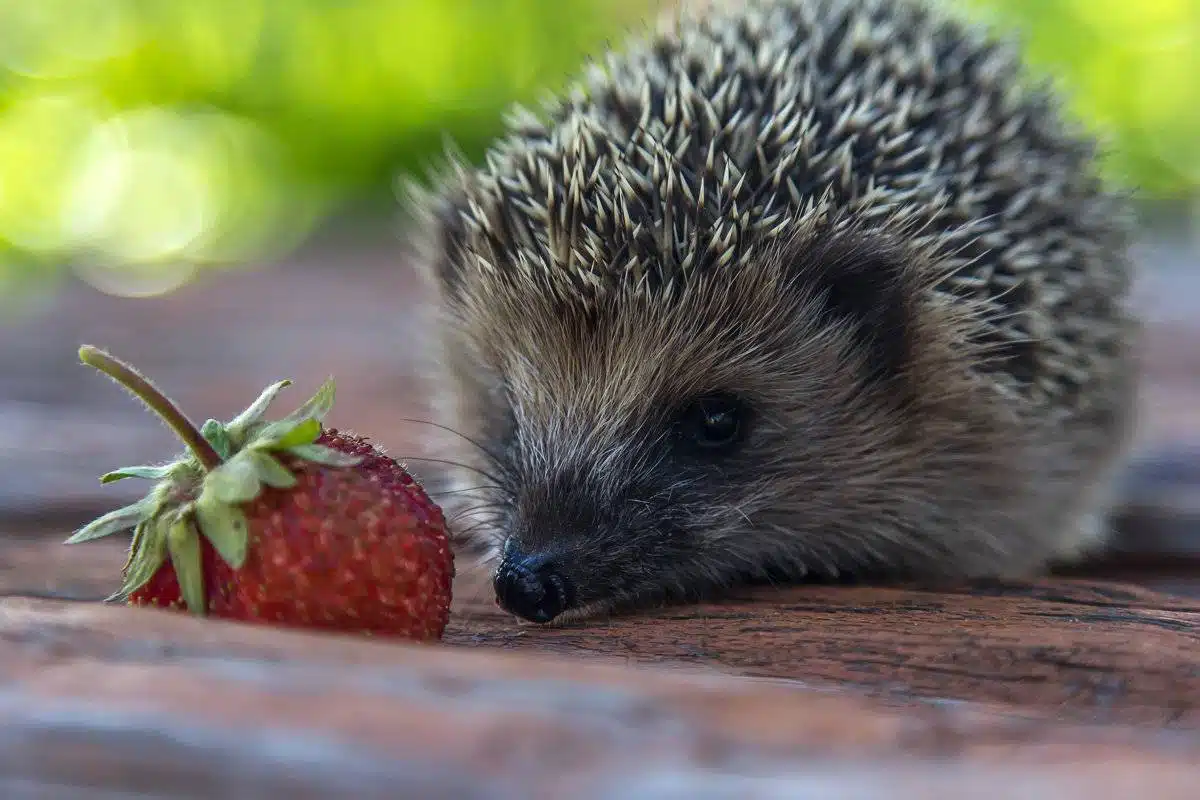
Hedgehog Diet: What’s Allowed and What’s Forbidden
Hedgehogs are insectivores, so their diet must be high in protein. The primary food source should be specialized hedgehog food or high-quality super-premium cat food with low fat content (up to 15%). Additionally, they need insects such as crickets, superworms, cockroaches, and mealworms. These provide not only protein but also natural food that helps maintain dental health.
Supplementing their diet with boiled lean meats, eggs, vegetables, and fruits in small amounts is recommended. Safe fruits include apples, pears, and melon, while good vegetable options include pumpkin, carrots, and zucchini.
Strictly forbidden foods include dairy products (due to lactose intolerance), nuts, chocolate, onions, grapes, citrus fruits, potatoes, salty or fried foods. Low-quality dry food should also be avoided, as it can cause digestive issues.
Hygiene: Bathing, Paw, and Quill Care
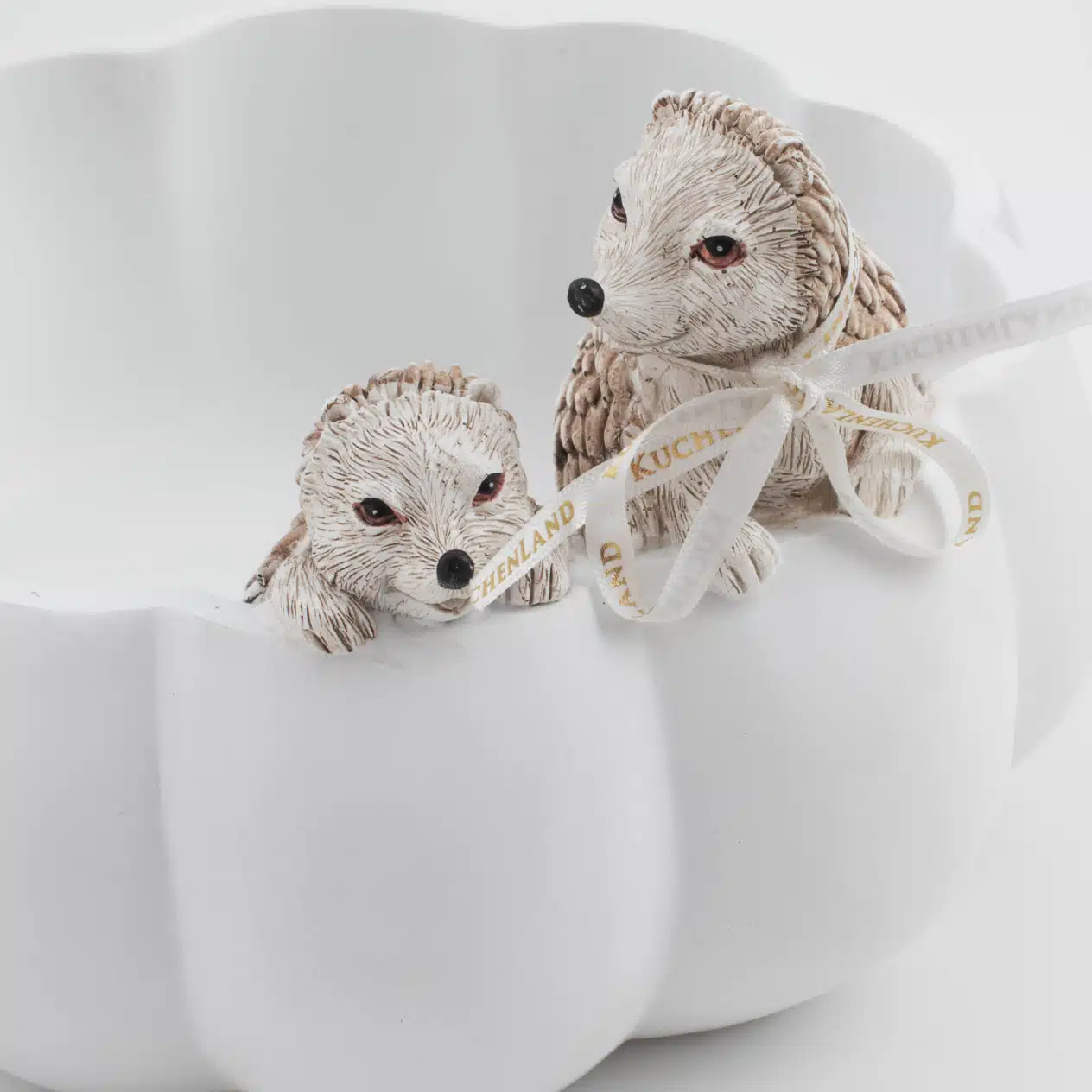
Hedgehogs do not have a natural odor but require occasional bathing, especially if their paws or belly become dirty. Bathing should be done no more than once a month, but if needed, you can simply rinse their paws after walking on the floor or contact with bedding.
Use shallow warm water (around 30-32°C) for bathing. It is crucial to prevent water from getting into their ears and nose, as this can cause infections. A fragrance-free baby shampoo or a specialized hedgehog shampoo is recommended. A sponge or soft brush can be used to gently clean the belly, paws, and back. Their quills can be carefully washed with an old toothbrush to remove excess skin oils and dust.
After the bath, the hedgehog should be thoroughly dried with a soft towel and left to dry in a warm area. Using a hairdryer is not recommended, as the loud noise can scare the hedgehog, and hot air can dry out their skin.
Do Hedgehog Nails Need Trimming?
Hedgehog nails grow continuously, and if they do not wear down naturally, they need to be trimmed. Overgrown nails can cause the hedgehog to get stuck in bedding, injure their paws, or even lose balance while walking.
Use small animal nail scissors or cat nail clippers. It is essential to cut only the transparent part of the nail and avoid the pink area where blood vessels run. If a nail is cut too short and starts bleeding, treat the wound with hydrogen peroxide.
Social Behavior and Interaction with the Owner
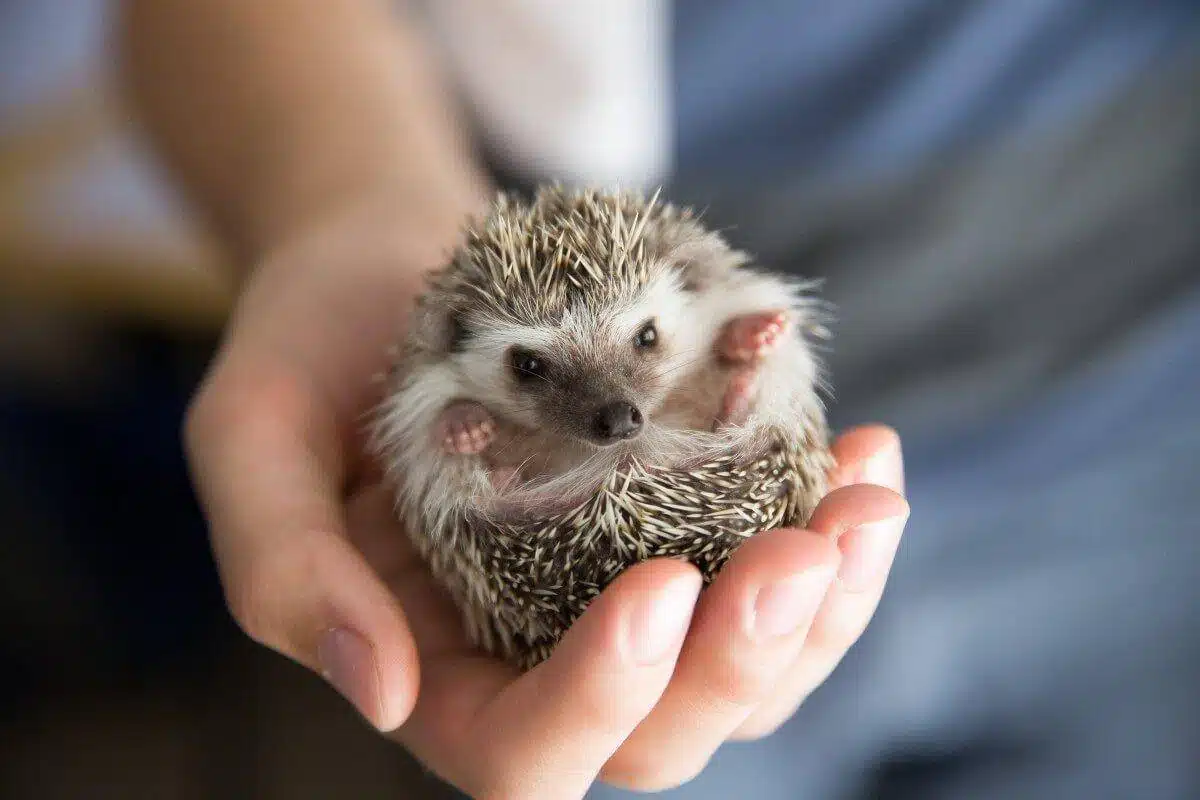
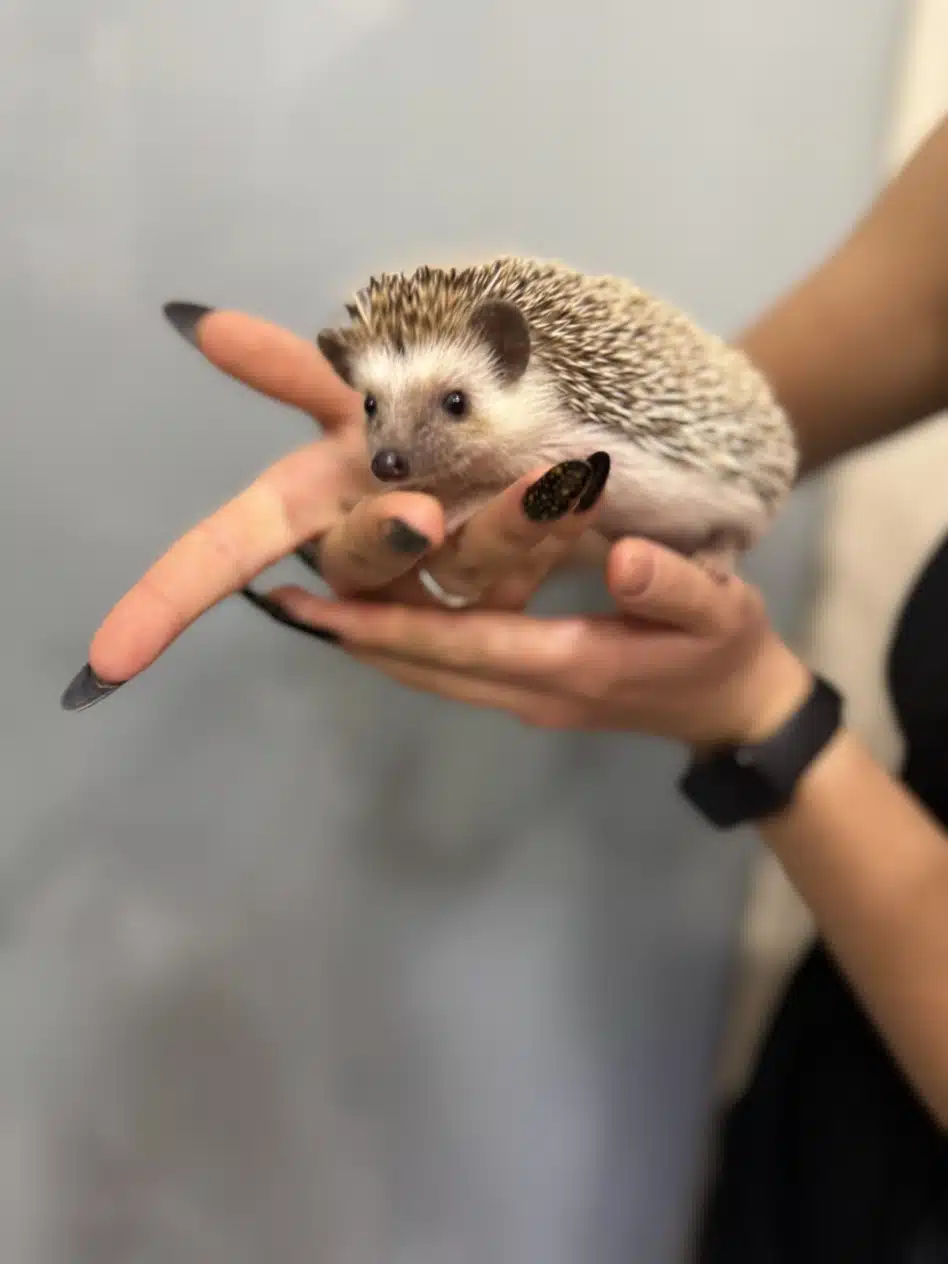
Hedgehogs are independent and self-sufficient animals, but that doesn’t mean they can’t be tamed. With the right approach, they can get used to their owner, allow handling, and even show curiosity about interaction.
Can a Hedgehog Be Tamed?
Taming a hedgehog requires patience. The key is to give it time to adapt. During the first few days after bringing it home, avoid handling the animal—just talk to it in a calm voice near its enclosure. The owner’s scent is crucial, so leaving a small piece of clothing near the hedgehog can help it become familiar with the smell.
Once the hedgehog stops being afraid, you can start offering food by hand, avoiding sudden movements. If the hedgehog starts sniffing or touching your hand with its nose, it’s a sign that trust is developing.
How to Stop a Hedgehog from Biting
If a hedgehog bites, it may be a sign of fear, stress, or dissatisfaction. Never pull your hand away sharply or punish the hedgehog, as this will only reinforce the negative reaction. Instead, gently blow on its face or distract its attention so it understands that biting doesn’t achieve the desired result.
Another reason for biting is the smell of food on your hands. Always wash your hands thoroughly before handling a hedgehog.
Getting a Hedgehog Used to Hands
To help a hedgehog become comfortable with handling, regularly place it on your palm—but do so correctly. Always pick up the hedgehog from below, supporting its belly rather than grabbing it from above, so it doesn’t feel threatened.
It’s important not to press on the quills or forcefully try to unroll the hedgehog if it curls into a ball. Patience and a gentle approach will help earn its trust.
Over time, hedgehogs get used to their owners, stop curling up at every touch, and some even enjoy falling asleep in their owner’s hands.
Common Hedgehog Diseases and Prevention
Although hedgehogs appear sturdy thanks to their quills, they are quite sensitive animals prone to various health issues. Many problems can be prevented with proper care, but if symptoms arise, prompt action is crucial.
Obesity
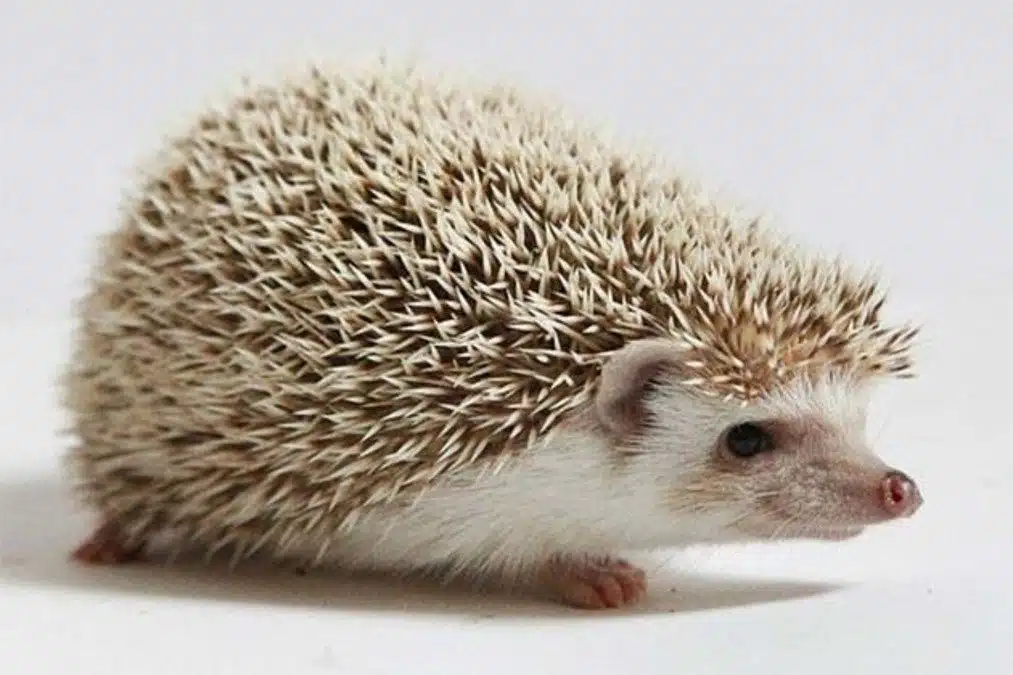
Hedgehogs are prone to gaining excess weight, especially if fed too much dry food or not provided with enough physical activity. Signs of obesity include an enlarged belly, difficulty moving, and reluctance to be active. An overweight hedgehog may lose flexibility and might even struggle to curl into a ball, which is a serious safety concern.
To prevent excess weight, monitor their diet, avoiding excessive fats and carbohydrates. If a hedgehog is already overweight, switch to a low-calorie diet, increase protein intake, and encourage more activity—such as using a running wheel (without crossbars to prevent paw injuries).
Skin Issues: Fungal Infections and Mites
Hedgehogs have sensitive skin, and due to their dense quills, early signs of problems can be hard to detect. If the hedgehog is scratching excessively, has flaky or red patches, or is losing quills, it may indicate a fungal or parasitic infection.
Fungal infections often develop due to high humidity, poor hygiene, or a weakened immune system. Mites can be introduced through contaminated bedding, new substrate, or exposure to infected animals.
To prevent skin problems, maintain cleanliness in the cage, regularly change the bedding, avoid pine shavings (as they may cause allergies), and monitor the hedgehog’s skin condition. If symptoms appear, consult a veterinarian immediately.
Respiratory Diseases
Hedgehogs can catch colds if kept in drafty areas or exposed to low temperatures. Signs of respiratory issues include sneezing, nasal discharge, wheezing, and lethargy.
Pneumonia can develop rapidly in hedgehogs, so immediate veterinary attention is required if symptoms appear. Preventive measures include avoiding sudden temperature changes, not bathing the hedgehog in cold water, and keeping its cage away from open windows or air conditioners.
Breeding Hedgehogs at Home

Breeding hedgehogs in captivity is a challenging task that requires experience and careful attention. Female hedgehogs reach sexual maturity at around 5-6 months, and pregnancy lasts between 30 to 40 days.
If breeding is planned, the female must be provided with a calm and stress-free environment. After birth, the babies should not be touched for the first two weeks, as the mother’s rejection may occur due to unfamiliar scents. The enclosure should include a hiding place for the mother and her young, and the male should be separated, as he may show aggression.
Baby hedgehogs are born blind with soft quills, which gradually harden. By 3-4 weeks, they begin eating solid food and can be weaned from their mother. With proper care, young hedgehogs grow up healthy and strong.
Are Hedgehogs the Right Pet for You?
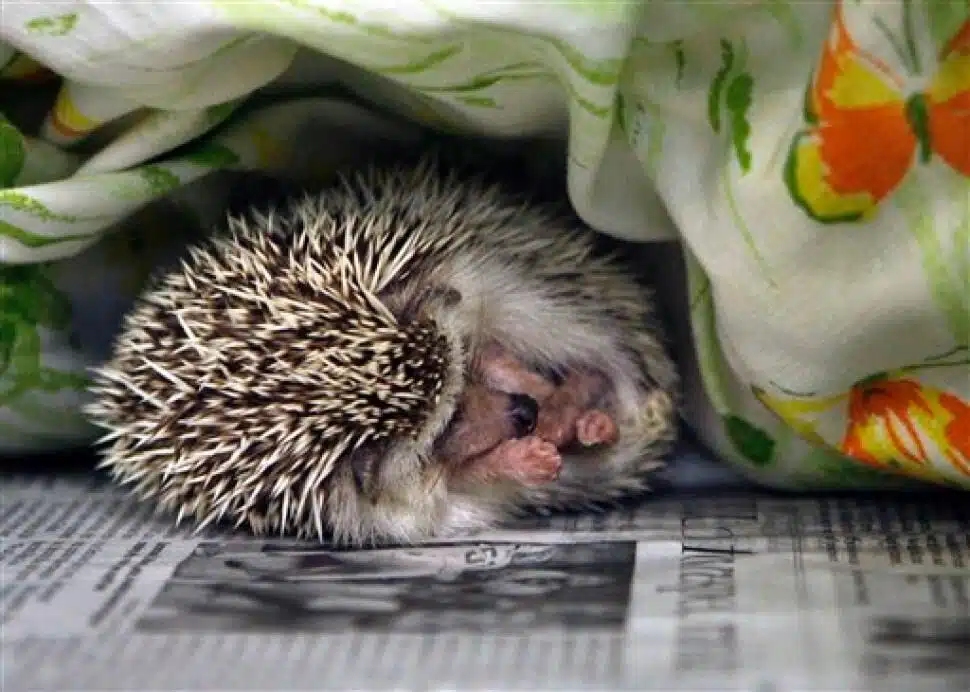
Hedgehogs are adorable, curious, and compact pets, but they are not for everyone. They do not enjoy excessive attention, do not play like dogs or cats, and require specialized care. If you are willing to follow a proper diet, maintain optimal conditions, and provide a comfortable environment, a hedgehog can become a wonderful companion for years.
For a comfortable pet experience, keep these key points in mind:
- Hedgehogs cannot eat just anything; their diet must be balanced.
- They do not like noise or constant handling; they are better suited for observation rather than active play.
- Proper temperature and humidity must be maintained to prevent health issues.
- If your hedgehog starts acting unusual, losing quills, moving less, or sneezing, consult a veterinarian immediately.
If you want a unique pet, are ready to follow all care recommendations, and respect its personality, a hedgehog will become a true treasure and bring you countless joyful moments!
Hedgehog Grooming at V.O.G DOG SALON
